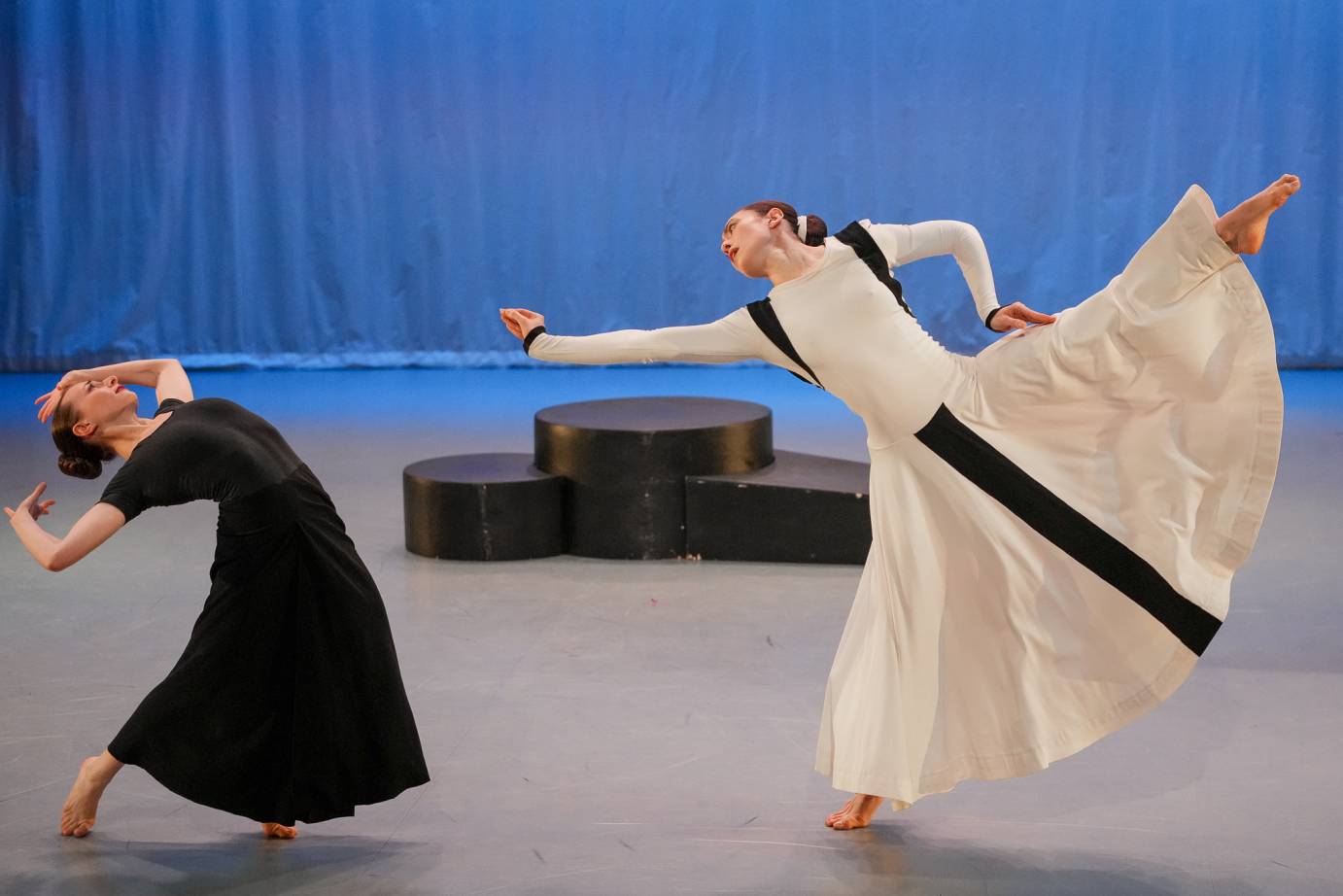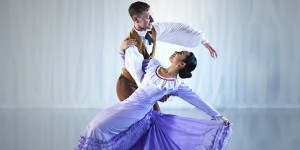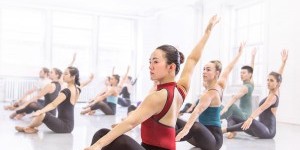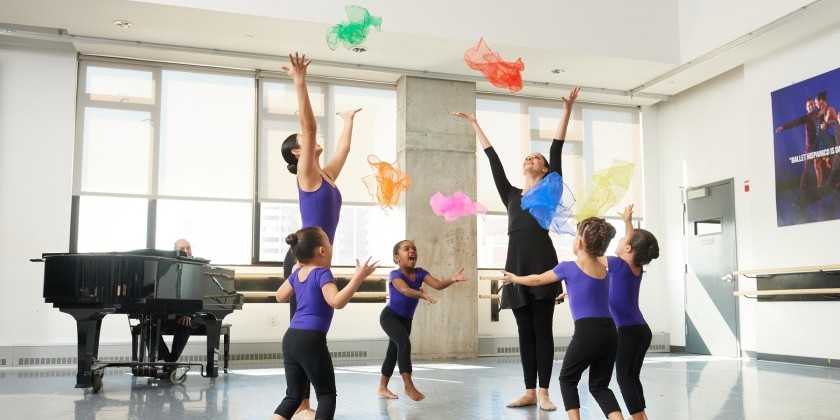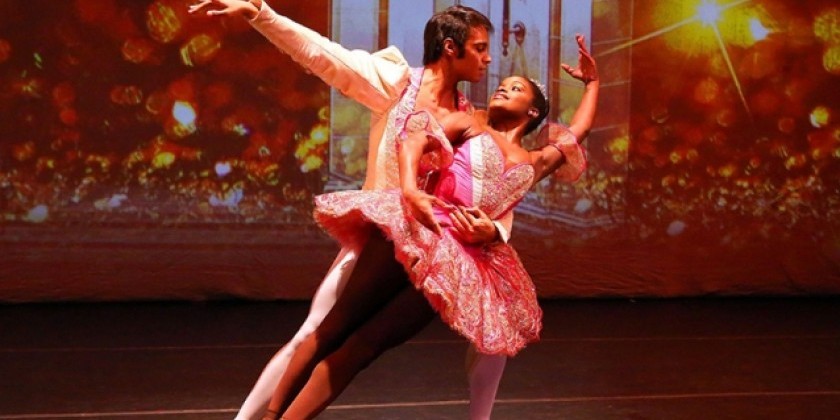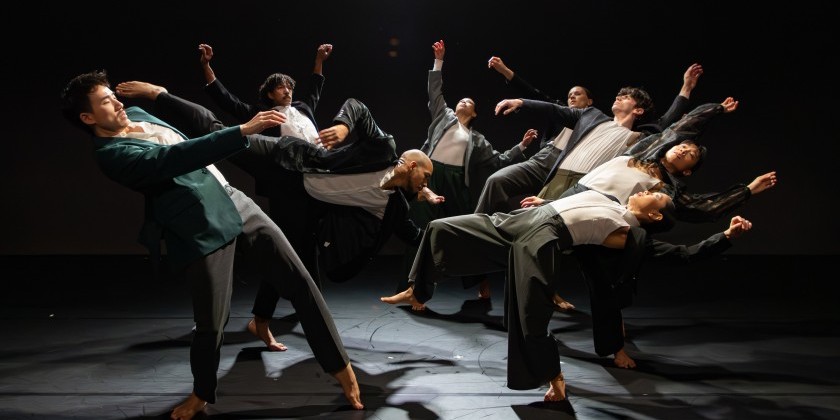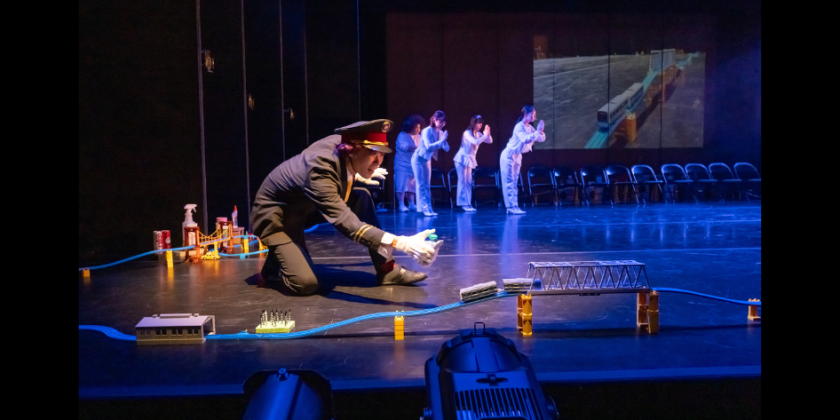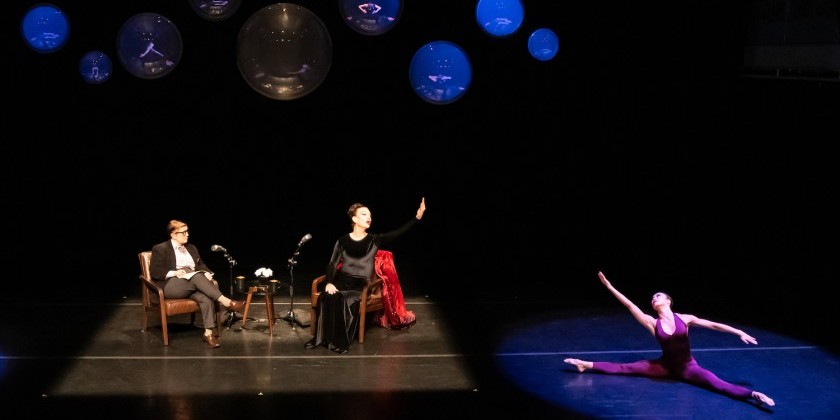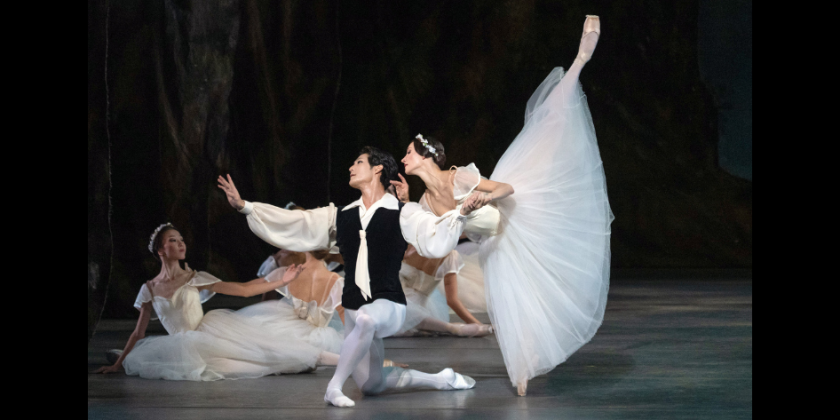IMPRESSIONS: Graham 2 at the Martha Graham Studio Theater
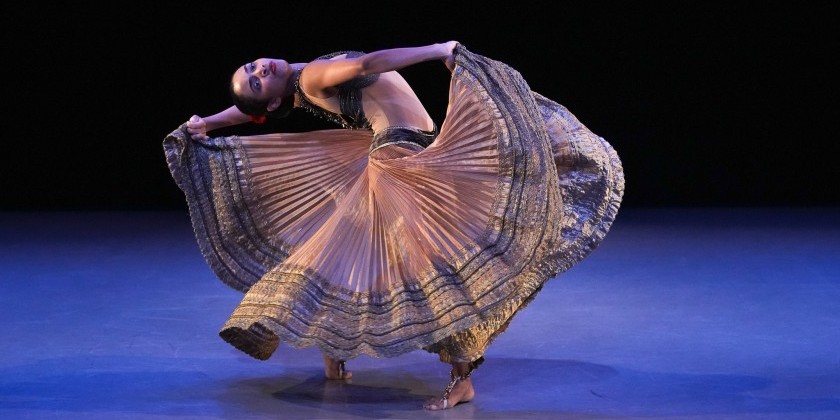
Director: Virginie Mécène
Dancers: Jackson Bradford, Ashley Bromfield, Yeowon Chae, Emmy Lebrun, Aspen Mason, Tiffany Marshall, Julian Myrland, Isabella Pagano, Grace Sautter
Guest dancers from the Martha Graham School: Riley Henderson, Europa Carvalho, Barbara Sulvic
Choreographers: Ted Shawn and Martha Graham
Dates: May 29 - 31, 2025
Passing the torch is a solemn duty in the relay race that we call civilization. For the Martha Graham Dance Company, this means training young dancers to perform the works of the company’s late founder, whose brilliant contributions to America’s cultural life should be imperishable. An institution eagerly anticipating its 100th anniversary next year, this troupe has a venerable legacy to safeguard.
How well it performs this task can be judged from the success of its junior company, Graham 2, which appeared on May 29, at the Graham Studio Theater in Westbeth. Under the direction of the refined but no doubt exacting Virginie Mécène, this elite squad of nine young dancers brought vigor and ambition to a program of modern masterworks; and the evening revealed some electrifying talents.
The first of these was Ashley Bromfield, whose fiery performance of the Ted Shawn solo Serenata Morisca must have astonished anyone who saw her last year as the initiate who assumes the role of the Virgin Mary in Graham’s Primitive Mysteries. Bromfield brought a radiant tranquility to the ritual processions and tableaux of Primitive Mysteries: she was eloquent in her stillness, and then transfigured by grief. This season, in contrast, her eyes flashed seduction and her legs churned beneath swirling skirts in a red-hot number of the Nautch type that Shawn created for Graham in 1916 as an outlet for her passionate nature. Bromfield is expressive, with a liquid movement quality, and evidently possesses versatility. She is someone to watch.
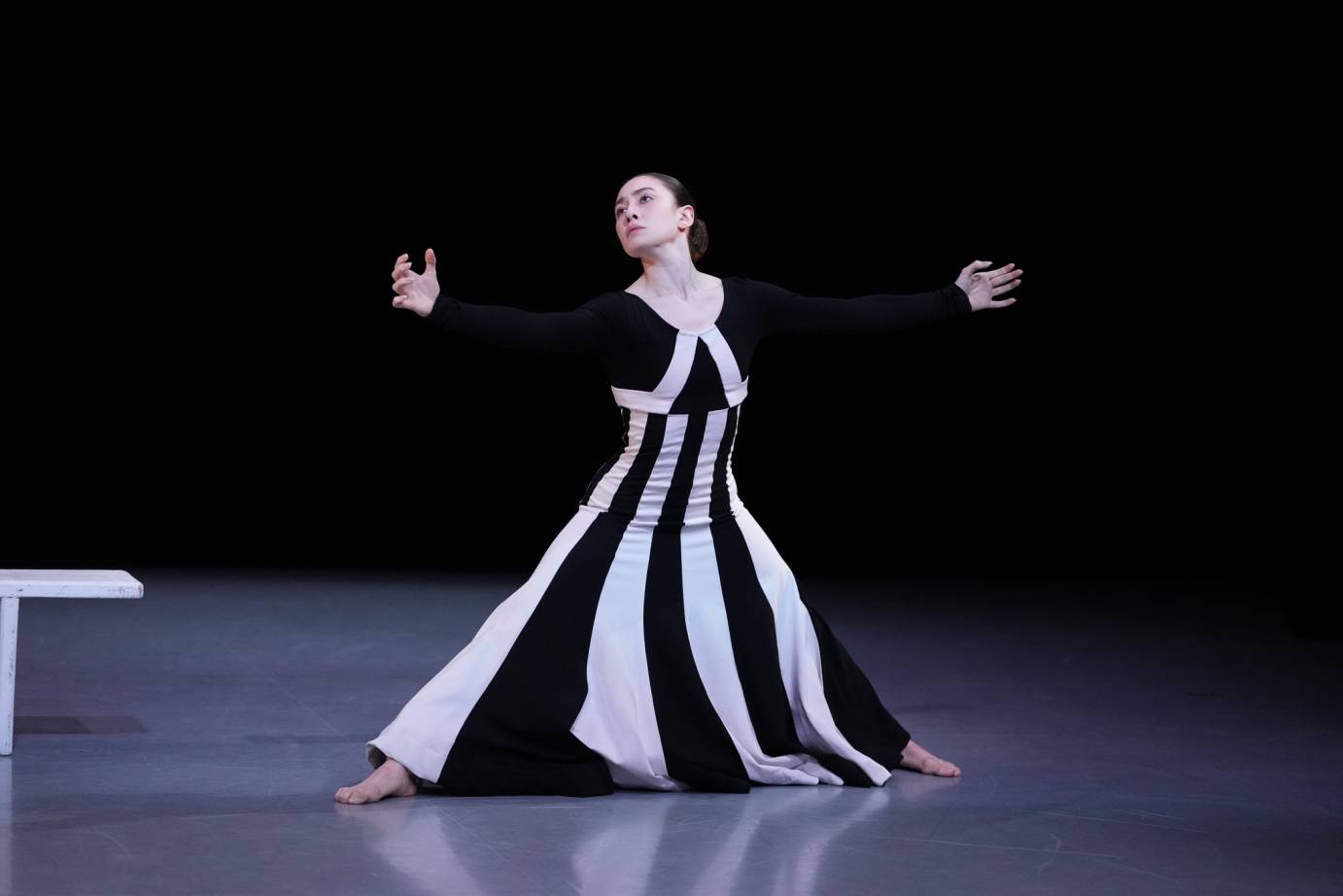
Graham’s 1937 solo Deep Song, inspired by the cruelties of the Spanish Civil War, seems to belong to a different century, though the dancer’s vertically-striped dress, participating in the action, reveals the choreographer’s prior acquaintance with skirt dances. The choreographer also makes creative use of a bench, which soloist Isabella Pagano stands on end to give herself a seat against a wall, where she finds temporary shelter. More alarmingly, when she crawls under the bench, Pagano finds herself in a claustrophobic space like a coffin. While calling on the public to recognize the plight of Spanish women, Graham’s abstract choreography hints at a shattered landscape. In Deep Song, the soloist’s dangerous tilts, nosedives, and poses with limbs angling up from the floor may suggest a city under aerial bombardment.
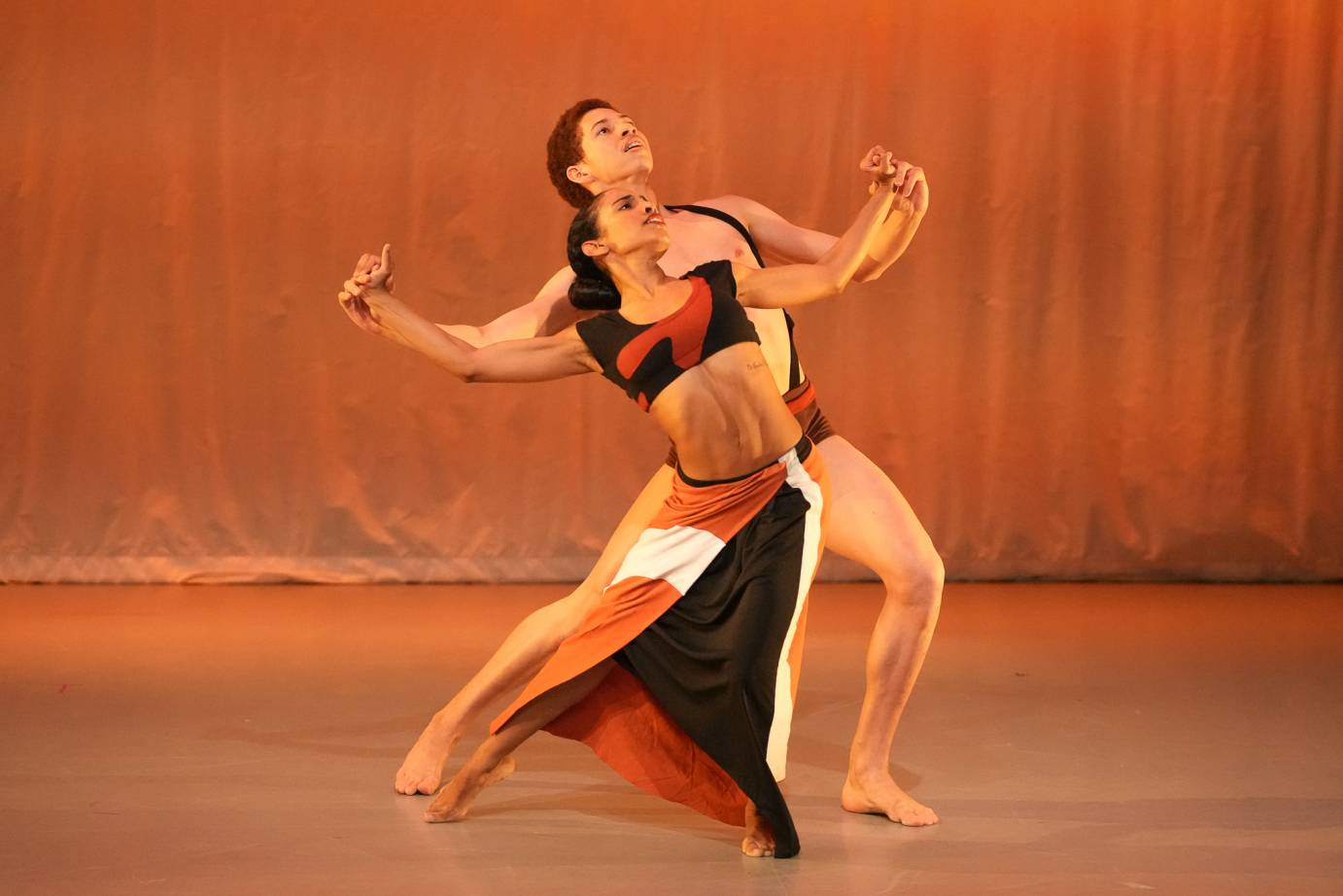
Studying antiquity, with special regard for its myths and rituals, not only offered Graham an escape from the violence of the 20th century, but also a possible route to self-knowledge. At the outset of a polished excerpt from Dark Meadow Suite, Bromfield reappears as a seeker gazing calmly into the distance, as a female corps circles upstage. The corps’ stylized gestures suggest the figures on archaic vases, but Bromfield is more three-dimensional. Making an appeal, she reaches out to embrace the hidden knowledge that she regards with longing and wonder. Fate cooperates in mysterious ways as, among much activity, an unseen force seems to pull Bromfield backward, hurrying her upstage on her heels. Her future partner, Julian Myrland, also enters backward from the corner. How blindly do we stumble through life! After Myrland’s space-devouring solo, Bromfield returns — backward, again — and, at last, the partners synchronize.
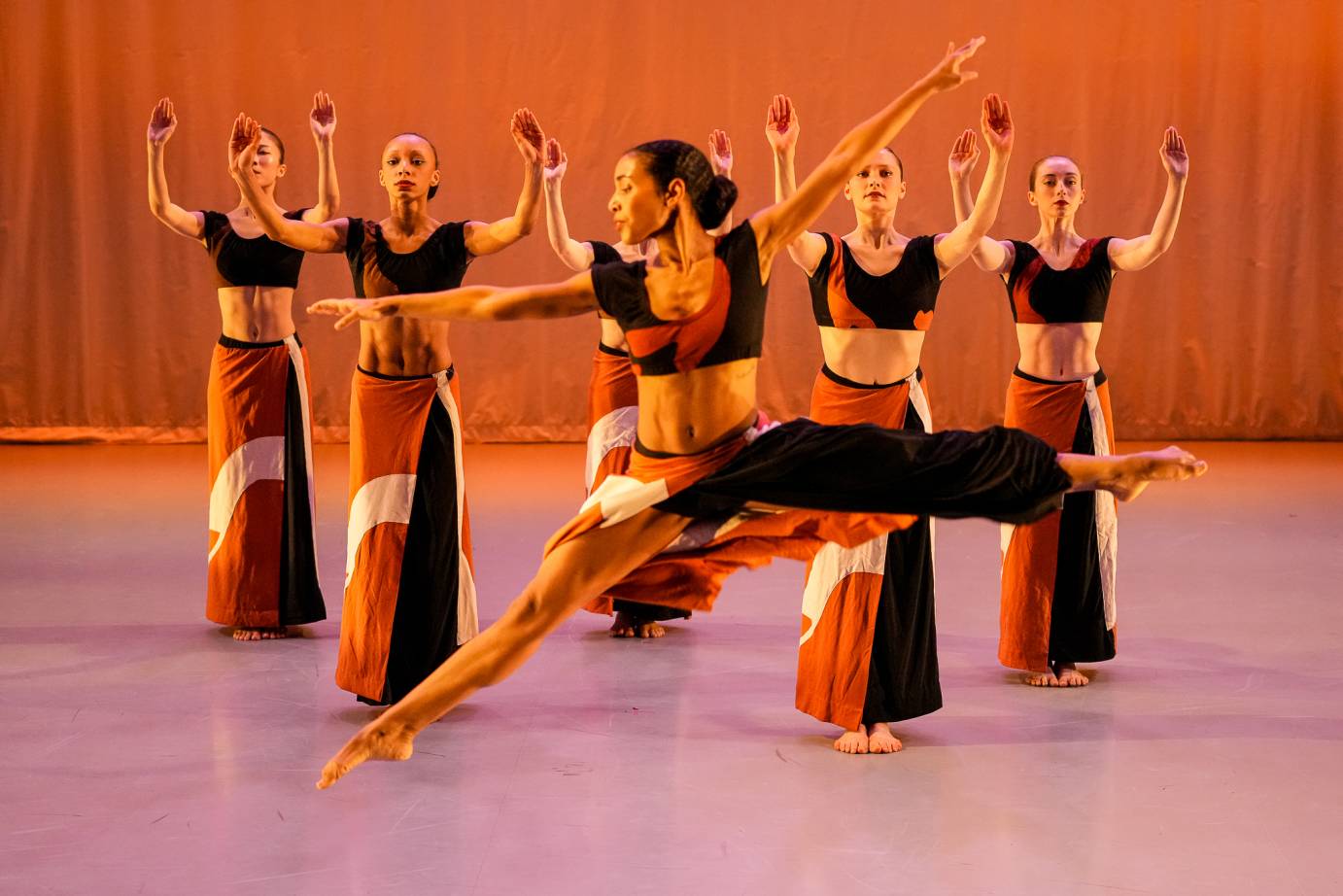
This excerpt from Dark Meadow Suite is considerably reduced, omitting the male corps, but we do get a gorgeous double-duet in which Jackson Bradford and Emmy LeBrun form the second couple. The women orbit around the men, and shelter at their feet. With the men anchoring them, they lean out at a daring angle. Finally, the partners become attached back-to-back, a device that creates intimacy while preserving the women’s freedom to look away and dream. At the heart of these relationships, however, lies a mystery.
If these excerpts from Dark Meadow Suite seem vague in their intimations, not so the excerpt from Graham’s impassioned Cave of the Heart (1946), which opens the second half of the program. This Cave of the Heart Suite does without Isamu Noguchi’s remarkable set pieces — the upstage boulder like a “black aorta;” the chain of island stepping-stones; and the shimmering brass armature that conceals the sorceress Medea until the time comes when she can fly away in it. No matter. Without the set, the choreography reveals its own, powerful design; and the dramatic relationships among the characters could not be clearer.
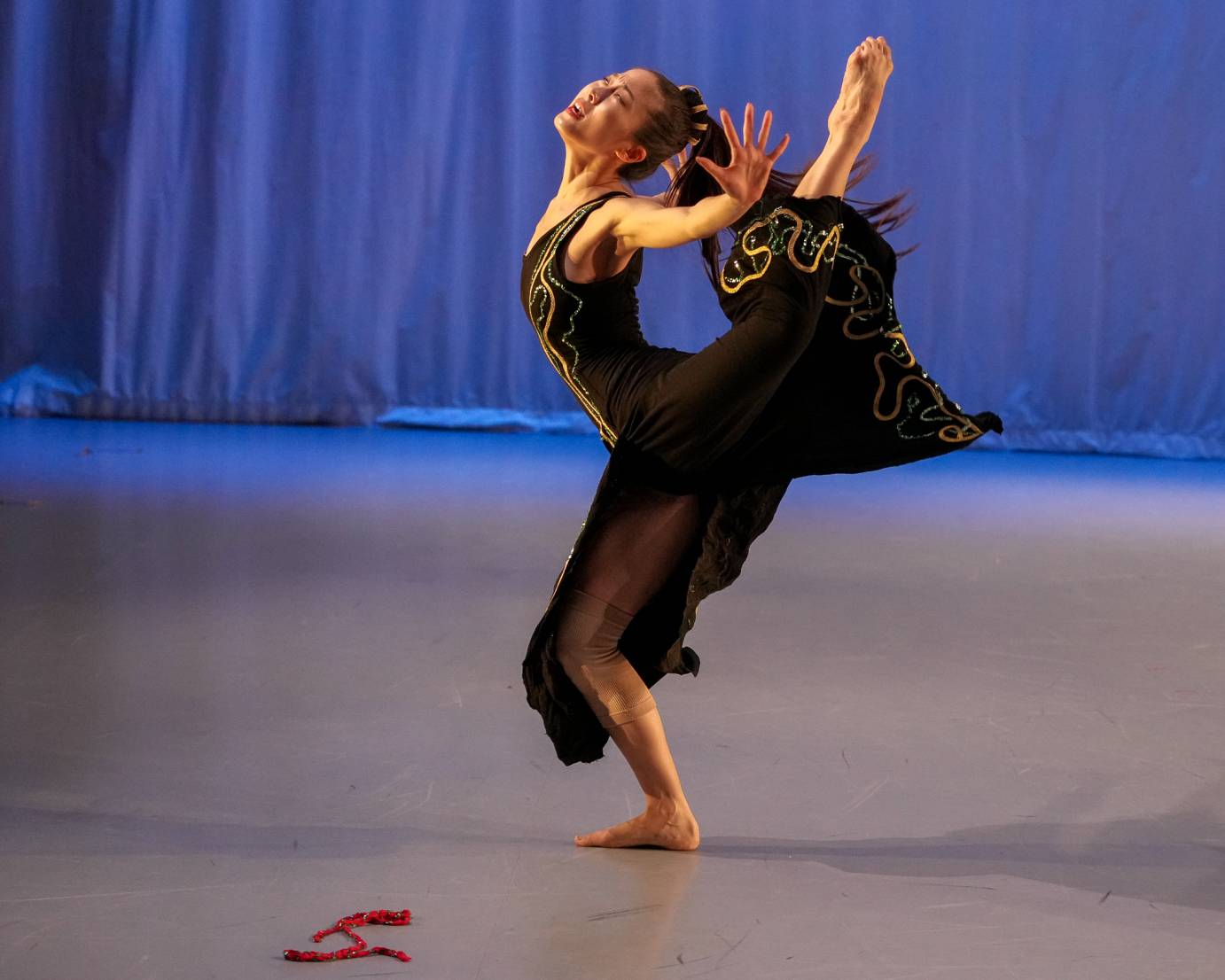
Once again, the casting suggests that Mécène wishes to develop her charges’ versatility. Yeowon Chae, lissome and bewitching in the rapturous “Conversation of Lovers” duet from Graham’s Acts of Light, now plays Medea, jilted by her heroic consort, Jason, and out for blood. No longer shy, but venomous, Chae reveals Medea’s savagery in the dance with the sparkling red cord that symbolizes the sorceress’s “serpent heart.” Quaking with uncontrollable rage, she draws the cord from her bosom and dangles it like a toy before she mimes devouring it. As she whips the air with her long pony-tail, and scrabbles on her knees, an insane glee takes the place of rage. Chae is terrific.
Jackson Bradford portrays Jason. Bending stiffly from the waist and advancing with long, conquering steps, this character’s very strength seems to be a source of his fragility. Tiffany Marshall is the child-like Princess, who climbs him as if he were a tree, or a mountain; and Grace Sautter is the terrified Chorus, who foresees, but cannot stop the slaughter.
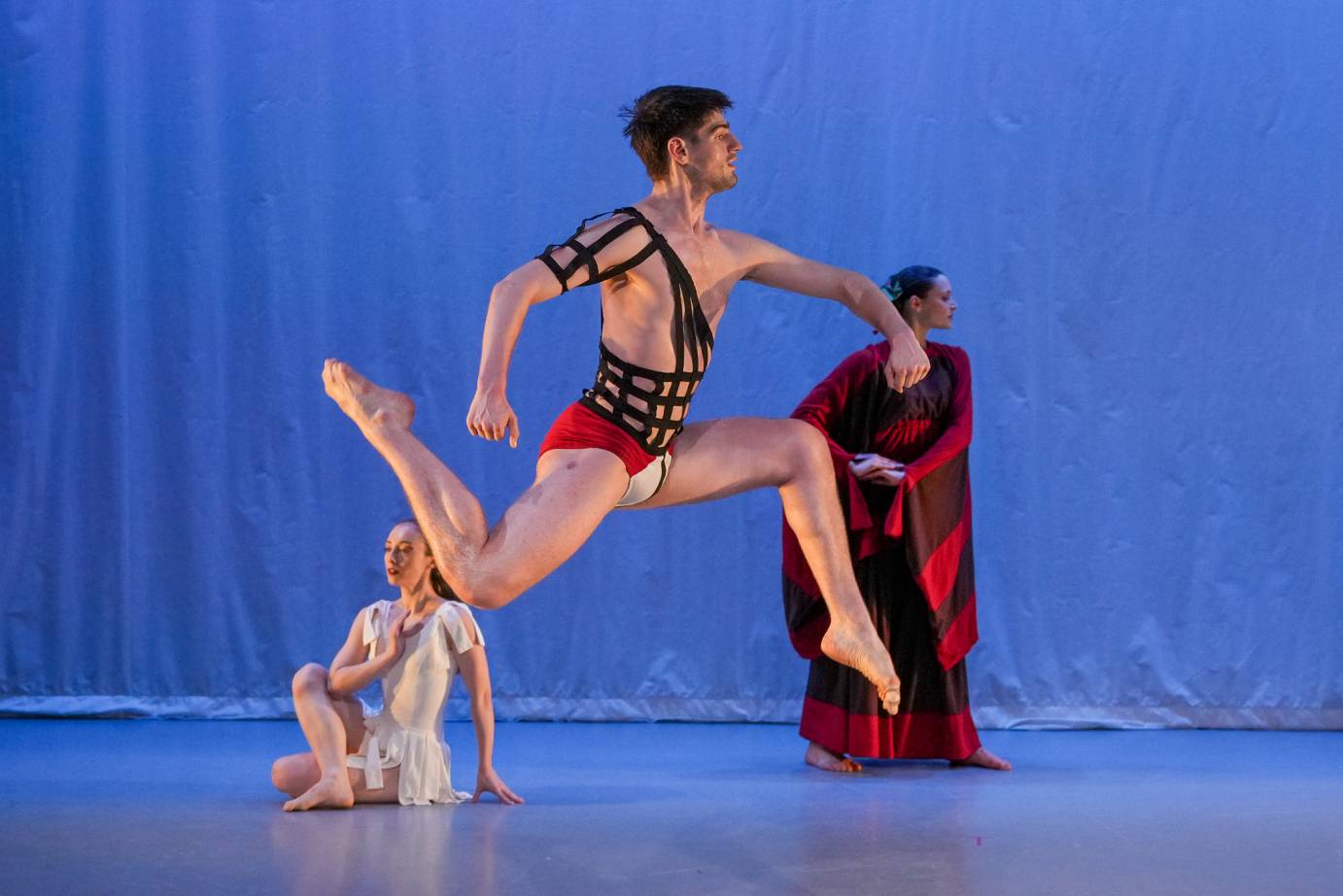
Cave of the Heart has the timeless quality of myth; but this program’s concluding number, the “Prelude to Action” from Chronicle, returns us to the dark reality of the 1930s. During that tumultuous decade, a society scarcely recovered from the upheavals of the First World War and the Russian Revolution watched uneasily as Fascism swept to power in Italy and Germany; and Spain convulsed in Civil War. Could another devastating global conflict be far off?
Artists were well aware of the danger. Kurt Jooss had choreographed his anti-war masterpiece The Green Table in 1932; and, the following year, Léonide Massine unveiled his expressionist ballet Les Présages,depicting man’s struggle with destiny and the specter of war. The rushing cadres in Graham’s “Prelude to Action,” not only suggest political action, but also a belief in progress. What may surprise contemporary viewers in “Prelude to Action” is its combination of optimism and dread. Graham’s generation still hoped that the conflict they feared might give birth to a better world.
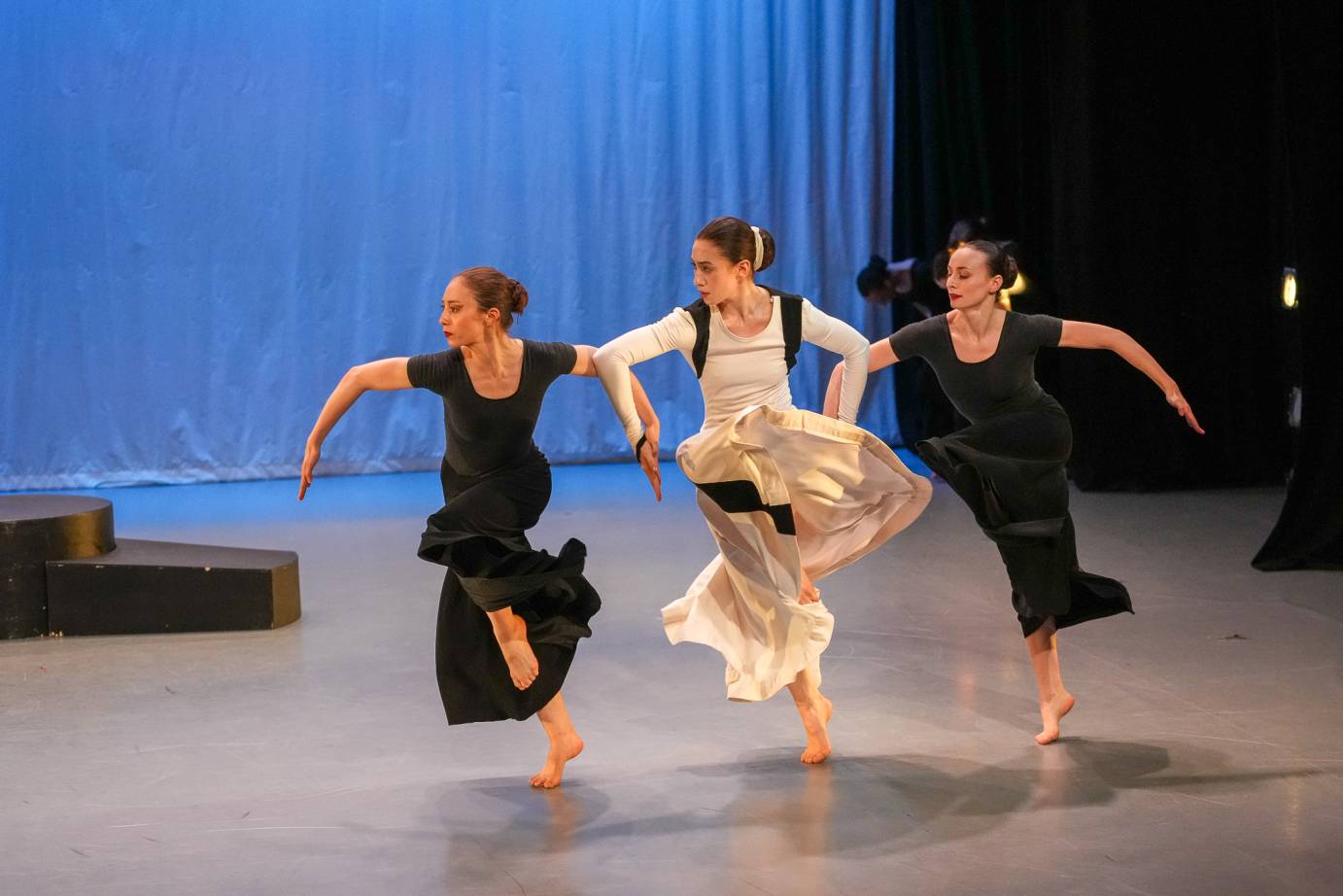
Prelude to Action is filled with vital energy and excitement. The soloist, Isabella Pagano, begins with her limbs extended in an X, seeming to take the measure of her world. Then she twists and rears. Mounting a two-step platform and bouncing on her heels, she summons a chorus of black-clad women who rush past her in fragmented groups. They tip forward in profile and leap around themselves with sharp-angled gestures, eventually even cartwheeling. Pagano dashes among them, inspired and caught up in the unstoppable tide of history. After a cautious, and reflective solo, she becomes increasingly involved. A woman, both helper and antagonist, emerges from the group, and Pagano links arms with partisans who support her on either side. Resuming her opening stance, but no longer alone, she faces the future with courage and determination. If this dance has a lesson for us today, however, perhaps it lies not in a call to unity, but in Graham’s all-American vision of the soloist as a heroic individual.
